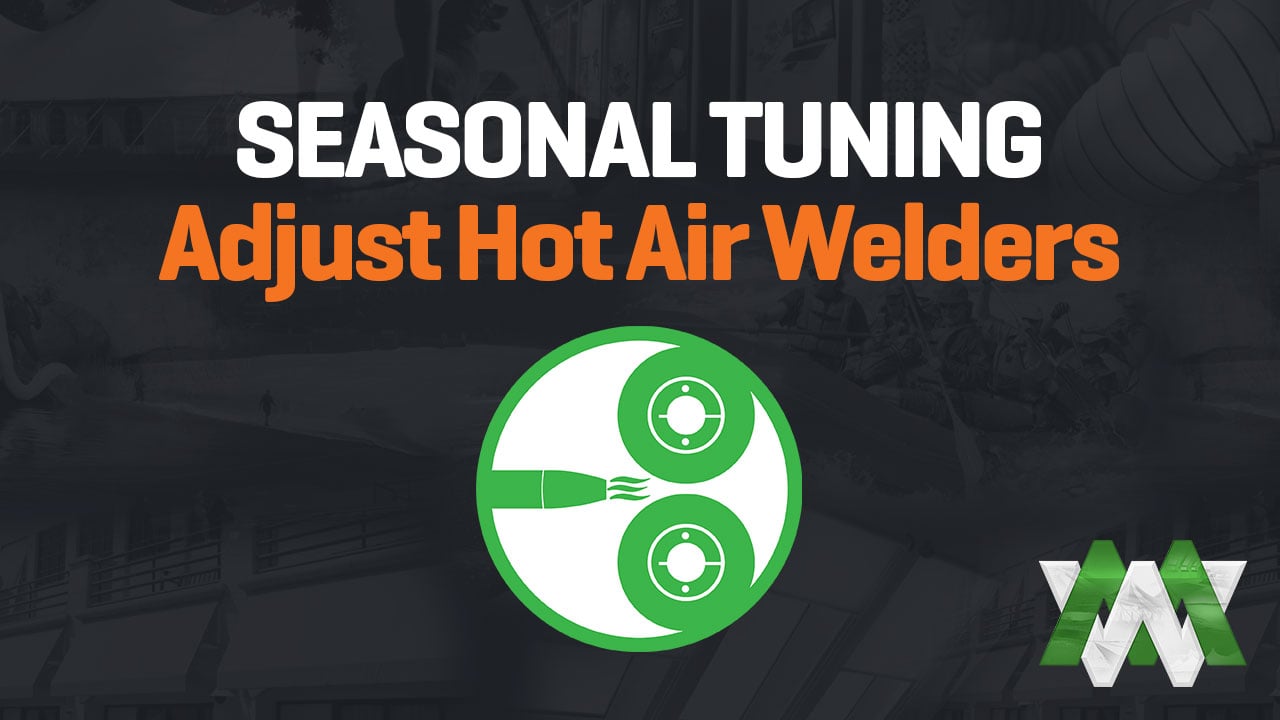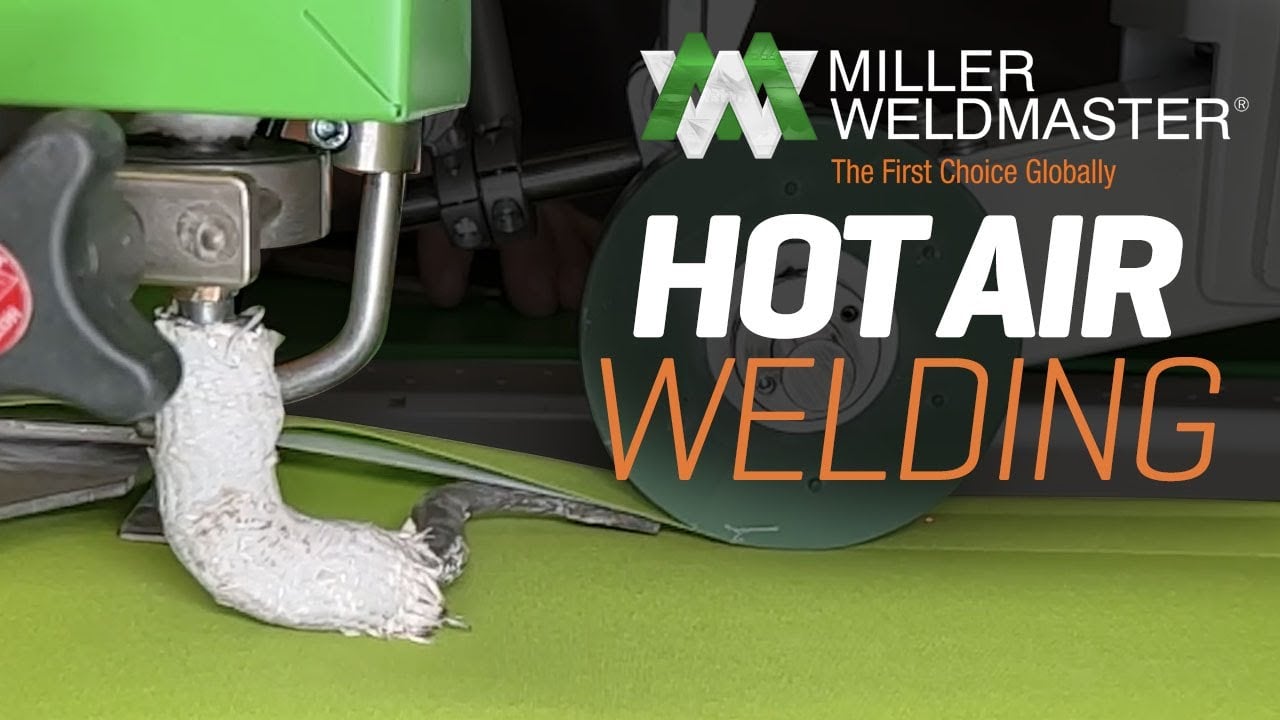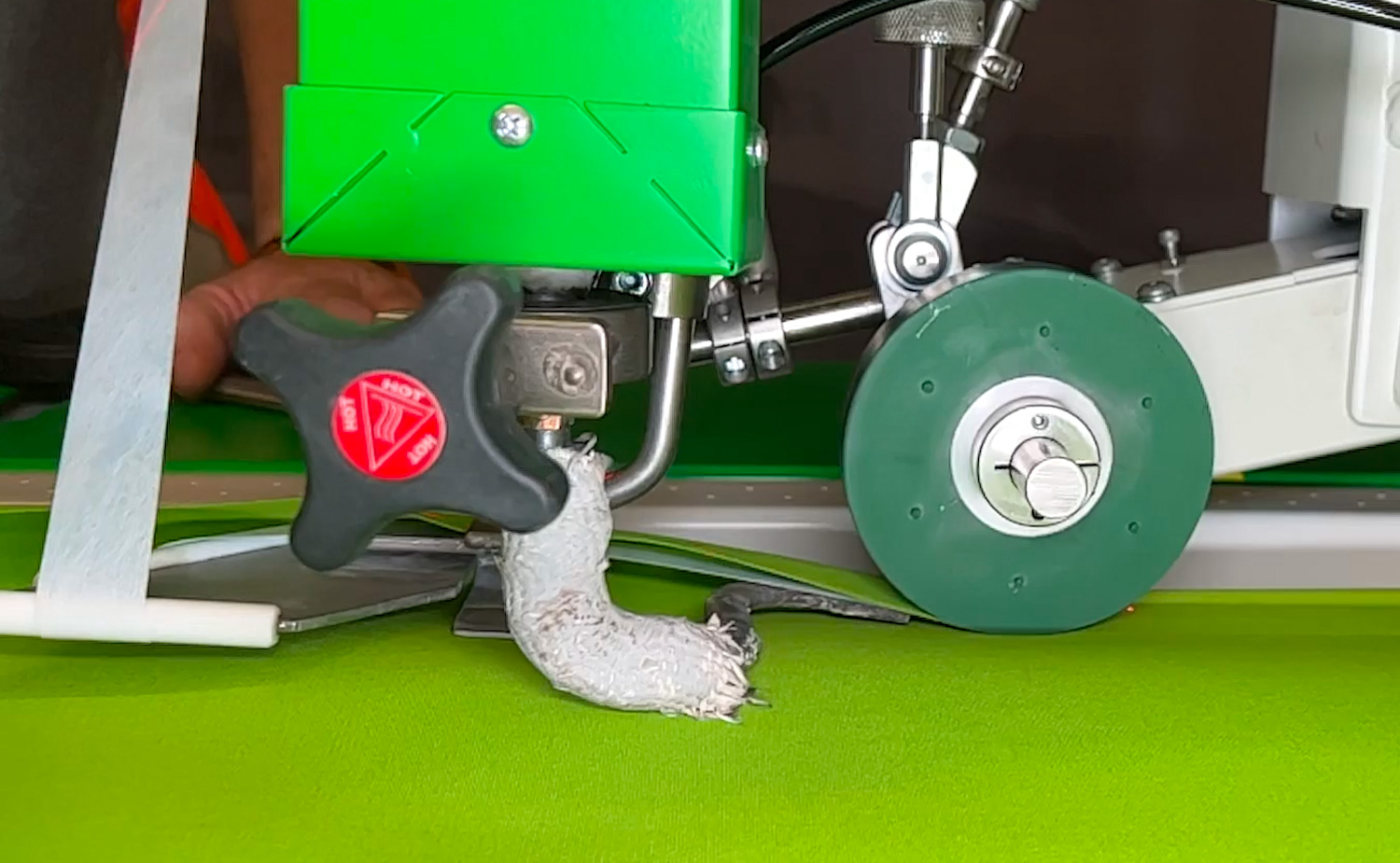As the seasons change, so does your workshop environment—and those fluctuations can directly impact your weld quality. Whether it’s cold winter air causing brittle seams, or summer humidity leading to bubbles and weak bonds, every climate change brings new challenges. That’s why it’s essential to adjust hot air welders to maintain precision and seam consistency year-round.
Ergonomic design in hot air welders helps reduce operator fatigue during frequent seasonal adjustments, ensuring greater comfort and efficiency for users.
At Miller Weldmaster, we understand how sensitive hot air welding can be to environmental factors. Proper calibration keeps your equipment performing at its peak—protecting seam strength, visual appearance, and overall productivity. Regular hot air welding maintenance can significantly reduce unexpected downtime.
Explore Hot Air Welding Technology
Why Environment Matters in Hot Air Welding
Hot air welding relies on a careful balance of airflow, temperature, and pressure. When that balance is disrupted by seasonal changes, even small variations in temperature or humidity can alter seam integrity.
Here’s how climate can affect weld outcomes:
| Climate Condition | Typical Impact on Welds |
|---|---|
| Cold air | Heat loss, uneven welds, brittle seams |
| Hot air | Over-melting, material burn, discoloration |
| High humidity | Bubbles, seam delamination, trapped moisture |
Understanding these conditions helps operators anticipate challenges and take proactive steps. Precise temperature control is essential to maintain weld quality despite environmental fluctuations, as it helps prevent issues like burning holes or inconsistent welds. Learn more about airflow and temperature balance in our Hot Air Glossary.
Temperature Shifts: How to Adjust Hot Air Welders Year-Round
Cold Weather Welding Challenges
In colder conditions, materials and air entering your machine are cooler, which can slow heating and cause brittle seams or incomplete bonds. Condensation can also form on materials, weakening adhesion.
Tips for Cold Weather Welding:
- Thoroughly clean and prepare plastic surfaces before welding, including trimming or smoothing rough edges to ensure a strong, seamless weld.
-
Slightly increase the temperature setting to offset cooler airflow.
-
Reduce weld speed to allow materials to heat evenly.
-
Ensure all materials are dry and conditioned before welding.
Hot Climate Welding Adjustments
In hot weather, materials can soften more quickly—risking overheating or burning seams if not properly adjusted.
Tips for Hot Weather Welding:
-
Lower the temperature to prevent over-melting.
-
Increase airflow slightly to cool weld zones faster.
-
Perform test welds before full production runs.
-
Monitor the process closely to avoid overheating and excessive melt of the material, as too much heat can weaken the weld and compromise the strength and integrity of the plastic bond.
Pro Tip: Quick Seasonal Settings Reference
| Condition | Temperature Adjustment | Speed Adjustment | Airflow |
|---|---|---|---|
| Cold Weather | +5–10°C | Slightly slower | Normal |
| Hot Weather | -5–10°C | Slightly faster | Slightly higher |
Welding in High Humidity Conditions: What Operators Need to Know
Why Moisture Causes Bubbles & Weak Seams
When air humidity rises, moisture can become trapped between layers of material, especially in coated fabrics or vinyl. As the welder’s hot air hits, trapped vapor expands—forming bubbles or preventing complete fusion. Excess moisture can also disrupt proper bonding between layers, leading to weak seams.
Calibration Tips for Humid Environments
-
Pre-dry or pre-heat materials to remove moisture.
-
Store rolls in climate-controlled rooms to prevent water absorption.
-
Increase pre-heating or dwell time to allow even drying before welding.
-
Allow adequate cooling time after welding to ensure moisture does not compromise seam integrity.
For a deeper dive into quality improvement and environmental control, read Enhancing Product Quality with Advanced Hot Air Welding.
Tools & Technology That Help Maintain Seam Quality
Dual-Chamber Heat Systems
Machines with dual-chamber systems automatically regulate airflow and temperature, ensuring optimal air flow for consistent weld quality to maintain consistent results despite environmental changes. Learn more about this feature in our Dual-Chamber Heat System Overview.
Welding Machines Designed for Vinyl & Thermoplastics
Different materials react differently to temperature and humidity. Vinyl softens quickly, while heavy thermoplastics require more heat and time. Welding thermoplastic materials such as polyvinyl chloride (PVC) requires careful adjustment of temperature and humidity settings for optimal results. Understanding these reactions helps you fine-tune your setup.
See our full guide: Hot Air Welding Machines for Vinyl & Thermoplastics.
Monitoring Tools for Seasonal Tuning
Invest in tools that make calibration easier:
-
Infrared thermometers for consistent temperature checks. Such as the SeamVision available on Miller Weldmaster machines.
-
Digital airflow gauges for precision control.
-
Calibration software for repeatable seasonal settings.
-
Regular inspection of the heating element to check for wear or buildup, ensuring accurate temperature delivery.
-
Regular maintenance includes daily checks, routine cleaning, and periodic deep inspections of the tool's components.
A downloadable “Seasonal Calibration Checklist” can simplify this process and help ensure accuracy year-round.
Building a Seasonal Adjustment Routine
Creating a routine ensures you’re always ready for temperature or humidity swings.
Step-by-Step Seasonal Tuning Checklist:
-
Test welds at the start of each new season.
-
Record baseline settings (temperature, speed, airflow).
-
Adjust parameters to compensate for current conditions.
-
Inspect seams visually and physically for quality consistency.
-
Document changes for future reference.
Consider maintaining a quick chart like this in your workspace:
| Season | Key Adjustments |
|---|---|
| Spring | Monitor humidity; pre-dry materials |
| Summer | Lower heat slightly; increase airflow |
| Fall | Watch for condensation; adjust dwell time |
| Winter | Raise heat and slow speed; warm materials first |
By making adjustments routine, operators prevent small issues from turning into costly weld failures.
Regular practice is essential for overcoming the learning curve in seasonal adjustments. Practicing these steps helps operators refine their technique and achieve optimal results, even as conditions change throughout the year.
Miller Weldmaster: Supporting Weld Quality in Every Climate
For over 50 years, Miller Weldmaster has helped manufacturers around the world produce durable, high-quality seams—regardless of climate or material type. From automated calibration systems to hands-on training and technical support, our mission is to ensure your production runs stay consistent no matter the weather. Consistent upkeep delivers four major benefits: prevents downtime, ensures seam consistency, extends machine lifespan, and protects ROI.
Our experts can help troubleshoot weld inconsistencies, fine-tune your settings, or recommend upgrades that optimize performance year-round. We are committed to supporting you throughout your plastic welding journey, from initial setup to advanced troubleshooting, ensuring you have the resources and guidance needed at every stage.
Mastering seasonal adjustments isn’t just about avoiding weld defects—it’s about protecting your investment. By learning how to fine-tune and adjust hot air welders for temperature and humidity, you ensure long-lasting seams, smoother workflows, and consistent quality no matter what the weather brings.
Frequently Asked Questions About Hot Air Welders for Temperature & Humidity
How does temperature affect hot air welder performance?
Temperature changes alter heat transfer. Cold air cools materials faster, requiring higher heat, while hot air increases risk of over-melting. Materials must be properly heated to the correct temperature to ensure strong welds, and environmental changes can affect how quickly materials are heated.
Do different materials require different seasonal adjustments?
Absolutely. Vinyl, thermoplastics, and coated textiles all respond differently to environmental changes and may need separate heat or airflow settings. Different plastics, such as polyethylene and polypropylene, require specific adjustments to temperature and technique, as each specific plastic material has unique properties. It is important to use the same type of plastic material for proper bonding, as mixing different plastics can lead to poor weld quality. Understanding the characteristics of various plastic materials is crucial for seasonal tuning and achieving optimal results.
What tools help operators tune welders in changing climates?
Infrared thermometers, digital gauges, and modern welder control systems help maintain consistent output across seasons. Maintaining welding equipment—including cleaning nozzles, inspecting heating elements, and ensuring a proper compressed air supply—is essential for consistent seasonal tuning.
How often should I adjust my hot air welder for climate changes?
At minimum, recheck and recalibrate at the start of each season or whenever production environments shift significantly. Establishing a routine for seasonal adjustments helps maintain consistent weld quality. Neglecting maintenance shortens your machine's lifespan and can compromise product quality.





